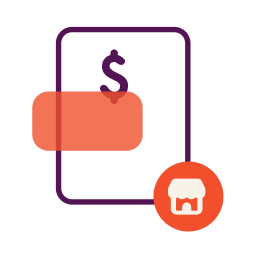Advertiser & Editorial Disclosure
A cash flow statement is a report that tracks the money that flowed into and out of your business over a fixed period of time. Click below to download a cash flow statement template you can use to create this important report for your company.
What Is a Cash Flow Statement?
The primary purpose of a cash flow statement (also called a statement of cash flows) is to show you how much cash your company made and how it managed the money it brought in over a fixed period of time. Most cash flow statements track your company’s cash and cash equivalents received and spending for a month, a quarter, or a year. (Tip: Cash equivalents are liquid assets or financial instruments that will reach maturity in three months or less.)
A cash flow statement is similar to an income statement, but the two reports don’t cover the exact same information. While an income statement shows your company’s overall profit or loss during a specific time frame, a cash flow statement shows whether a business has earned (and properly managed) enough cash to pay its bills and other financial obligations.
To explain it another way, a cash flow statement may help answer the following questions:
- Does your business have enough cash to cover payroll?
- Is there enough money available to cover operating expenses?
- Can your business afford to pay its loan and financing payments on time?
- Does your business have sufficient emergency funds for unplanned expenses?
If preparing your own financial statements makes you feel confused or overwhelmed, it may be best to work with a professional — at least initially. Nav also offers a free automated cash-flow analysis of your business bank account that may help you.
Online Bookkeeping by Bench
Tips on How to Use the Cash Flow Statement Template
Many small business owners find the cash flow statement to be one of the easiest financial statements they create. In some ways, your business’ cash flow statement isn’t all that different from balancing your business checking account — recording and calculating money coming in versus money going out. Yet, of course, there are some differences.
“A common method of creating a cash flow statement is to start with the income statement and adjust for working capital” explains Jo-Ann Yuen, a Chartered Accountant with 20+ years experience with multinational corporations and start-ups and the VP of Finance for Nav. “Working capital includes accounts receivable, inventory and accounts payable. If adverse trends are noticed in working capital (for example, a large increase in accounts receivable or inventory without a corresponding increase in sales), this might indicate a potential problem that should be investigated. Maybe the business is buying too much inventory and tying up valuable cash, or maybe the business is not collecting from customers in a timely manner.”
In addition to operating inflows and outflows, a business owner would also need to analyze cash requirements for investments and financing activities. For example, cash outflows might be required for an expansion opportunity or repayment of an outstanding loan.
Below are tips that will help you use the cash flow statement template provided above so you can better manage the money that flows into and out of your business accounts.
- Study the cash flow statement example to figure out how to create a statement of cash flows for your own business.
- Download and save a copy of the cash flow template — available in Excel, Google sheets, and PDF formats.
- Choose the accounting period you want to track (e.g. month, quarter, or year).
- Enter your company’s financial figures into all four sections of the statement of cash flows template — Beginning Cash Balance, Cash In, Cash Out, and Ending Cash Balance. (See below for further definitions of terms you don’t recognize.)
- Double check the figure in your “Ending Cash Balance” field for accuracy.
- Save the report in your preferred format (Excel, Google Sheets, or PDF).
- Repeat the process the following accounting period. (Most companies create a new cash flow statement on a monthly or quarterly basis.)
FreshBooks: Small Business Cloud Accounting Software
Cash Flow Statement Terms
When you’re filling out your cash flow statement, you may come across a few unfamiliar terms. The cheat sheet below should help you understand the main sections of a cash flow statement and the type of information you should include in each.
Operating Activities
Operating activities included in your cash flow statement have to do with your day-to-day revenue and expenses (aka net income or loss). In the template provided, you’ll find two sections to enter operating activities — Cash In and Cash Out.
In the “Cash In” section you should record your operating cash flow. This includes revenue collected from regular business activities, such as:
- Revenue Received from Sales of Goods and Services
- Accounts Receivable Paid
On the other hand, the “Cash Out” section will include operating activities that resulted in cash paid to others from your business. These operating activity expenses might include:
- Inventory Purchased
- Salary and Wages Paid
- Insurance Premiums Paid
- Taxes Paid (Minus Depreciation)
- Short-Term Debts Paid
Pro Small Business Accounting Software by Intuit
Investing Activities
Next on your cash flow statement template you’ll encounter income and expenses from your business’ investing activities. Once again, investing activities are broken down into “Cash In” and “Cash Out” categories on the template.
Investing activities listed in the “Cash In” section might include:
- Investment Securities Sold (Stocks, Bonds, etc.)
- Long-term Assets Sold (Equipment, Real Estate, etc.)
- Payments Collected on Loans
Conversely, the “Cash Out” section listing your company’s investment activities would include the reverse:
- Investment Securities Purchased
- Long-term Assets Purchased (Equipment, Real Estate, etc.)
- Money Your Business Loaned to Others
Financing Activities
Finally, your cash flow statement should contain information about any money your business borrows from lenders, long-term debt payments, and cash exchanged that pertains to owner’s or stockholders’ equity.
In the “Cash In” section you might list:
- Money Borrowed
- Stocks or Equity Issued to Raise Cash
- Money Collected from Investors or Owners
The “Cash Out” section of your spreadsheet might include:
- Principal and Interest Repaid on Long-Term Debt
- Stocks Repurchased
- Cash Dividends Paid
Net Cash Balance
The bottom line on your cash flow statement will be your ending cash balance (also called net cash balance). This number is a reflection of the total cash your company had in its possession during the accounting period. A negative cash flow number means your business spent more cash than it earned. A positive number means your business earned more cash than it spent.
Does Your Business Need Cash Flow Statements?
If your company is publicly traded, cash flow statements included in the quarterly financial reports required by the U.S. Securities and Exchange Commission. Yet even if your business is privately owned, tracking your company’s cash flow management is crucial. According to CBInsights, nearly one-third of startups fail because they run out of cash.
Some businesses find it’s best to hire an accountant to help prepare the statement of cash flows and other financial statements. There’s certainly value in this choice if you’re unfamiliar with financial projections and reporting. An accountant would know, for example, that the information you include in your cash flow statement may differ depending on whether you’re preparing a direct cash flow statement or an indirect cash flow statement.
Regardless of how you decide to track your company’s cash flow, make sure you don’t skip this important step. Good financial management of your company’s cash flow (and beyond) is an important key to the success of your business.
This article was originally written on October 23, 2019 and updated on October 31, 2019.





Have at it! We'd love to hear from you and encourage a lively discussion among our users. Please help us keep our site clean and protect yourself. Refrain from posting overtly promotional content, and avoid disclosing personal information such as bank account or phone numbers.
Reviews Disclosure: The responses below are not provided or commissioned by the credit card, financing and service companies that appear on this site. Responses have not been reviewed, approved or otherwise endorsed by the credit card, financing and service companies and it is not their responsibility to ensure all posts and/or questions are answered.